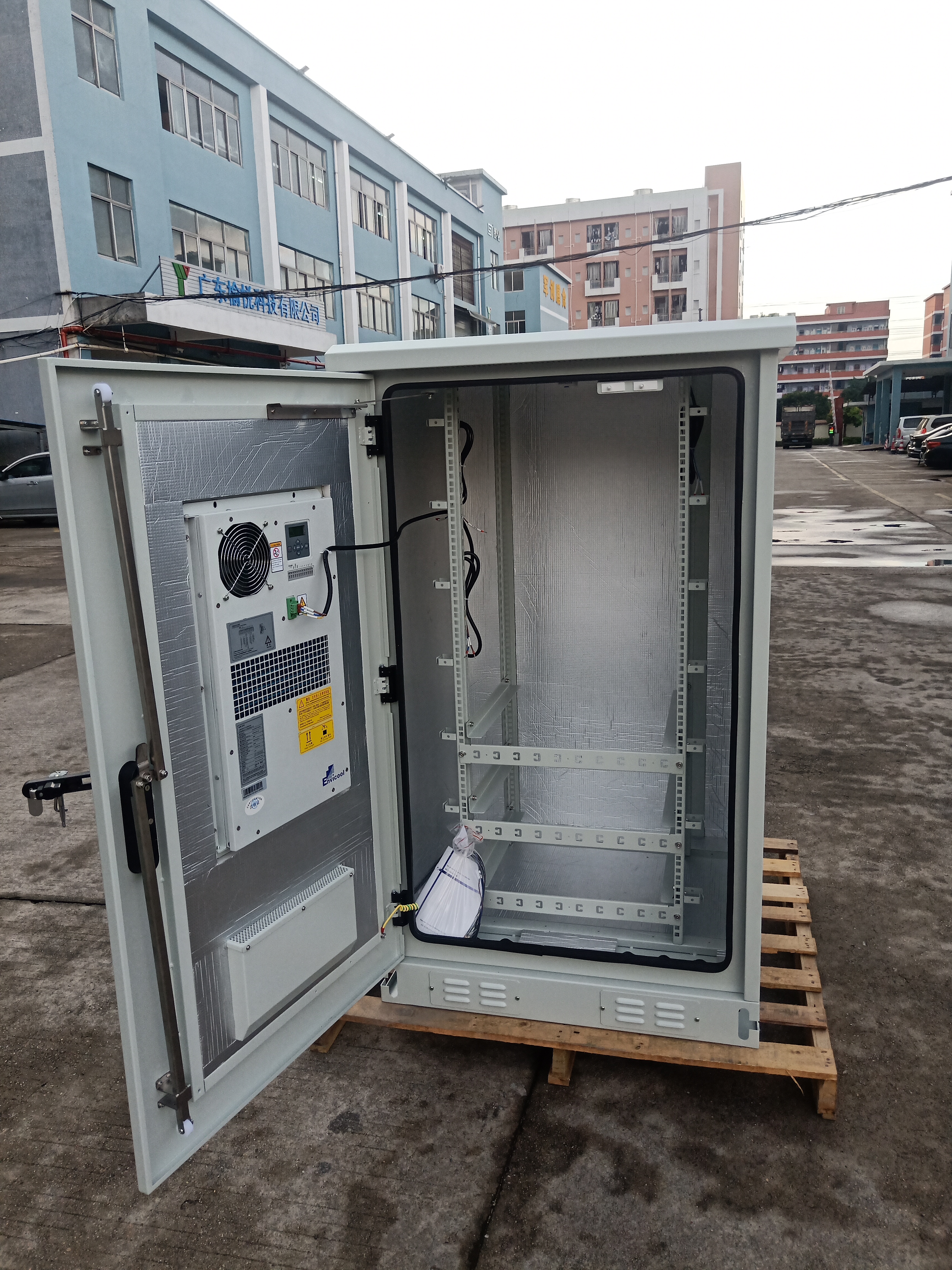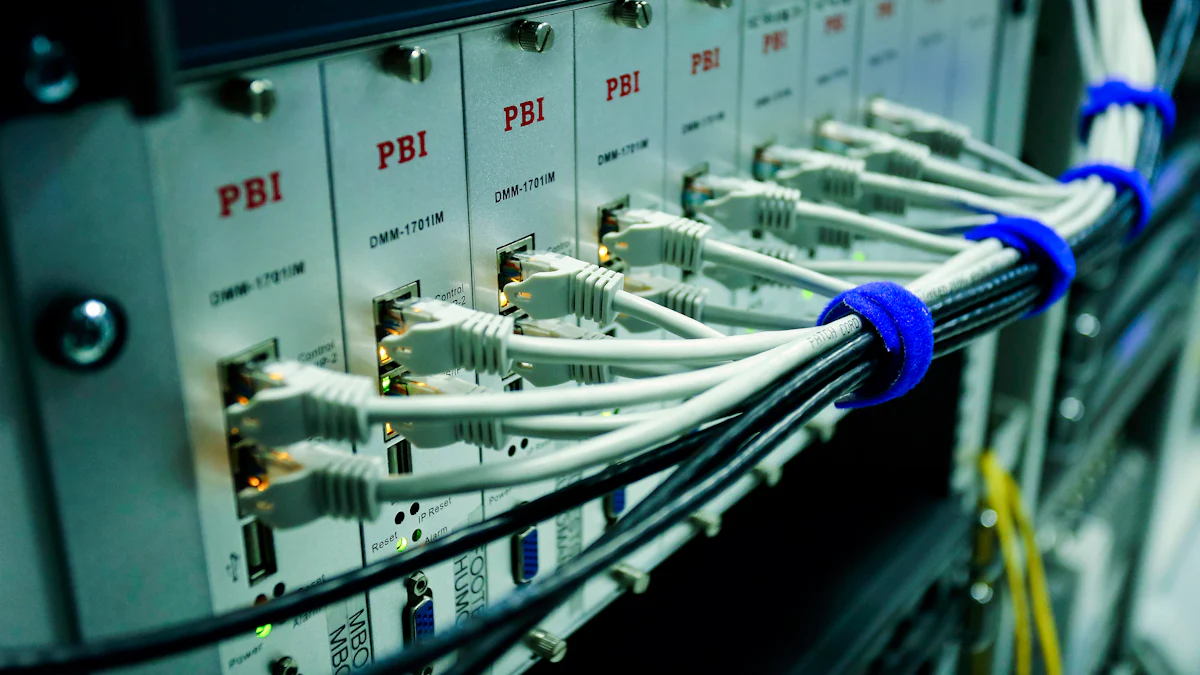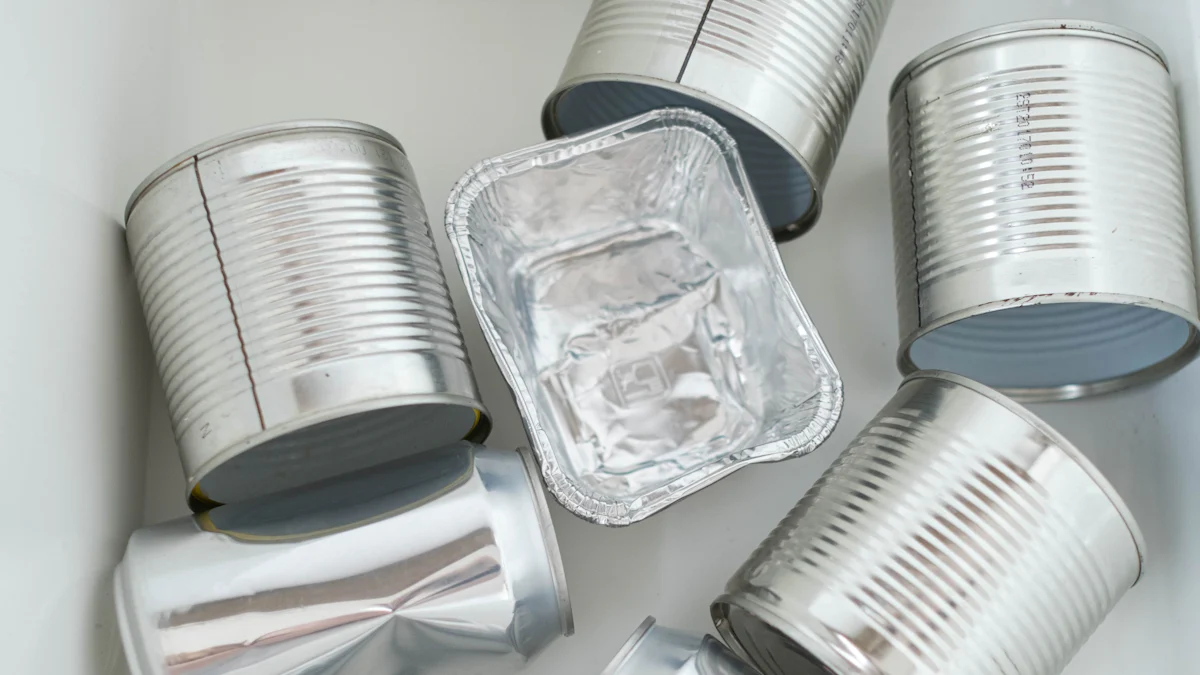Outdoor Telecom Cabinets Comparing Steel and Aluminum Options

Selecting the right material for outdoor telecom cabinets directly impacts their durability and performance. Materials like stainless steel and aluminum dominate the market due to their unique properties. Steel offers unmatched strength and shock resistance, making it ideal for heavy-duty applications. On the other hand, aluminum stands out for its lightweight nature and excellent heat dissipation. Surface treatments, such as powder coating, further enhance these materials by protecting them from rust, UV damage, and harsh weather. Additionally, when considering the internal layout, it's important to note that a space U configuration can optimize the use of available room, ensuring efficient organization of telecom equipment. Understanding the comparison between aluminum and stainless steel helps you choose a solution that balances cost-effectiveness and long-term reliability.
Key Takeaways
Choose steel for high-security applications due to its unmatched strength and durability, making it ideal for protecting sensitive telecom equipment.
Opt for aluminum when lightweight construction and corrosion resistance are priorities, especially in humid or coastal environments.
Consider the long-term costs: while aluminum may have a higher initial price, its low maintenance needs can lead to savings over time.
Utilize surface treatments like powder coating to enhance the durability of both steel and aluminum cabinets against rust and environmental damage.
Evaluate the specific environmental conditions and application requirements to make an informed decision between steel and aluminum.
Implement a space U configuration in cabinet design to optimize organization and efficiency for telecom equipment.
Regular maintenance is crucial for steel cabinets to prevent rust, while aluminum cabinets require minimal upkeep due to their natural corrosion resistance.
Overview of Steel and Aluminum

When selecting materials for outdoor telecom cabinets, understanding the unique characteristics of steel and aluminum is essential. Each material offers distinct advantages that cater to specific needs, environments, and applications.
Characteristics of Steel
Strength and Durability
Steel is renowned for its exceptional strength and ability to withstand heavy loads and physical impacts. This makes it a preferred choice for environments where cabinets face potential vandalism or require robust structural integrity. Its firm structure ensures that telecom equipment remains secure, even in challenging conditions. Additionally, stainless steel variants provide enhanced resistance to wear and tear, making them highly durable for long-term use.
Common Types of Steel Used in Telecom Cabinets
Telecom cabinets often utilize stainless steel or galvanized steel. Stainless steel offers superior corrosion resistance due to its chromium content, which forms a protective oxide layer. Galvanized steel, on the other hand, features a zinc coating that shields it from rust and environmental damage. These materials are commonly used in outdoor settings where durability and protection against harsh weather are critical.
Characteristics of Aluminum
Lightweight and Corrosion Resistance
Aluminum stands out for its lightweight nature, which simplifies transportation and installation. Despite its lower weight, it remains structurally strong, making it an excellent alternative to steel in applications where mobility is a priority. Moreover, aluminum naturally resists corrosion, even in humid or salty environments. This property eliminates the need for extensive surface treatments, ensuring that aluminum cabinets maintain their integrity over time.
Common Types of Aluminum Used in Telecom Cabinets
Most aluminum cabinets are constructed using aluminum alloys, which combine the metal's natural properties with added strength and durability. These alloys are particularly effective in environments with high humidity or exposure to salt, such as coastal regions. Their ability to dissipate heat efficiently also makes them ideal for housing sensitive telecom equipment, ensuring optimal performance.
By understanding the comparison between aluminum and stainless steel, you can make informed decisions based on your specific requirements. Whether you prioritize the strength of steel or the lightweight and corrosion-resistant properties of aluminum, each material offers unique benefits tailored to different applications.
Key Comparison Factors

Durability
How steel performs under heavy loads and impacts
Steel offers unmatched strength and resilience, making it a top choice for applications requiring high durability. Its dense structure allows it to withstand heavy loads and resist deformation under pressure. For outdoor telecom cabinets, this means enhanced protection for sensitive equipment in environments prone to physical impacts or vandalism. Stainless steel, in particular, excels in maintaining its structural integrity over time, even in demanding conditions. This makes it a durable option for long-term use.
Aluminum’s ability to withstand wear and tear
While aluminum is lighter than steel, it still provides impressive resistance to wear and tear. Its natural oxide layer acts as a shield, protecting it from scratches and minor abrasions. This property ensures that aluminum cabinets retain their functionality and appearance, even in challenging outdoor settings. Although it may not match the tensile strength of stainless steel, aluminum compensates with its ability to endure environmental stress without significant degradation.
Corrosion Resistance
Steel’s vulnerability to rust and protective coatings
Steel, despite its strength, is susceptible to rust when exposed to moisture. However, protective coatings like galvanization or powder coating can significantly enhance its resistance to corrosion. Stainless steel, with its chromium content, naturally forms a protective layer that minimizes rusting. This makes it a reliable choice for outdoor cabinets in areas with moderate exposure to moisture. Regular maintenance of these coatings ensures the longevity of steel cabinets in harsh environments.
Aluminum’s natural resistance to corrosion
Aluminum stands out for its exceptional corrosion resistance. When exposed to air, it forms a protective aluminum oxide layer that prevents further oxidation. This makes aluminum cabinets ideal for humid or coastal regions where salt and moisture are prevalent. Unlike steel, aluminum does not require additional coatings to maintain its integrity, reducing long-term maintenance efforts. This natural advantage positions aluminum outdoor kitchen cabinets and telecom cabinets as a practical solution for environments with high humidity.
Weight
Steel’s heavier weight and its implications
Steel’s density contributes to its heavier weight, which can complicate transportation and installation. However, this weight also adds to its stability and security, making it less prone to tampering or accidental displacement. For telecom cabinets, the added weight of stainless steel ensures a robust structure that can endure external forces. While this may increase logistical challenges, the trade-off often justifies the investment in high-security applications.
Aluminum’s lightweight nature and benefits
Aluminum is significantly lighter than steel, offering easier handling and installation. This lightweight property reduces transportation costs and simplifies setup, especially in remote or hard-to-reach locations. Despite its lower weight, aluminum maintains sufficient strength to protect telecom equipment effectively. Its lightweight nature also makes it an excellent choice for applications where mobility or frequent relocation of cabinets is required.
By understanding these key factors, you can make an informed decision when choosing between stainless steel and aluminum. The comparison between aluminum and stainless steel highlights their unique strengths, ensuring you select the material that best suits your specific needs.
Cost
Initial cost comparison of steel vs. aluminum
When evaluating the price differences between stainless steel and aluminum, you will notice that aluminum cabinets often come with a higher upfront cost. This is due to the manufacturing processes and the material's natural properties, such as its lightweight and corrosion resistance. Stainless steel, on the other hand, tends to be more affordable initially, especially in its galvanized form. However, the specific application and required features, like protective coatings or additional treatments, can influence the overall pricing. For instance, if you need a durable cabinet for harsh environments, the cost of stainless steel may increase due to added surface treatments.
Long-term cost considerations (e.g., maintenance, lifespan)
While steel may seem cost-effective at first glance, its long-term expenses can add up. Regular maintenance, such as reapplying protective coatings to prevent rust, contributes to ongoing costs. In contrast, aluminum cabinets require minimal upkeep due to their natural corrosion resistance. This advantage reduces maintenance expenses over time. Additionally, the lifespan of aluminum outdoor kitchen cabinets and telecom cabinets often surpasses that of steel in humid or coastal regions, making them a more economical choice in the long run. A thorough cost analysis should consider not only the initial investment but also the maintenance and replacement costs over the product's lifecycle.
Maintenance
Maintenance requirements for steel cabinets
Maintaining stainless steel cabinets involves periodic inspections and upkeep to ensure their longevity. Although stainless steel resists rust better than regular steel, it still requires protective coatings in environments with high moisture or salt exposure. Galvanized steel cabinets need regular checks to ensure the zinc coating remains intact. Without proper care, rust can compromise the strength and structural integrity of the cabinet. Cleaning with non-abrasive solutions and applying protective finishes can help extend the lifespan of steel cabinets.
Maintenance requirements for aluminum cabinets
Aluminum cabinets demand less maintenance compared to their steel counterparts. The natural oxide layer on aluminum protects it from corrosion, eliminating the need for frequent surface treatments. Cleaning these cabinets with mild detergents is usually sufficient to maintain their appearance and functionality. In addition, aluminum does not warp or degrade easily, even in extreme weather conditions. This low-maintenance nature makes aluminum cabinets an attractive option for outdoor applications, especially in areas with high humidity or salt exposure.
Applications and Suitability for Outdoor Telecom Cabinets
When to Choose Steel
Applications requiring high strength and security
Steel offers unmatched strength, making it the ideal choice for applications where security and structural integrity are critical. If you need cabinets to protect sensitive telecom equipment in areas prone to vandalism or physical impacts, stainless steel provides the durability required to withstand such challenges. Its dense structure ensures that the cabinet remains stable and secure, even under heavy loads or external pressure. For high-security installations, steel cabinets deliver the reliability you can trust.
Environments with minimal exposure to moisture
In environments with limited exposure to moisture, steel cabinets excel due to their robust nature. While stainless steel resists rust better than regular steel, it still performs best in dry conditions or areas with controlled humidity. Galvanized steel, with its protective zinc coating, adds an extra layer of defense against environmental wear. These qualities make steel a practical option for outdoor telecom cabinets in regions where moisture is not a significant concern.
When to Choose Aluminum
Applications prioritizing lightweight and corrosion resistance
Aluminum cabinets are the preferred choice when lightweight construction and corrosion resistance are priorities. Their reduced weight simplifies transportation and installation, especially in remote or hard-to-reach locations. Aluminum’s natural oxide layer protects it from corrosion, ensuring long-lasting performance without the need for extensive maintenance. This makes aluminum cabinets particularly suitable for projects where mobility and ease of handling are essential.
Environments with high humidity or salt exposure
In regions with high humidity or salt exposure, such as coastal areas, aluminum outshines steel in terms of corrosion resistance. Its ability to withstand harsh environmental conditions without rusting ensures that aluminum cabinets maintain their structural integrity over time. Additionally, aluminum outdoor kitchen cabinets and telecom cabinets dissipate heat efficiently, making them an excellent choice for housing sensitive equipment in challenging climates. By choosing aluminum for these environments, you reduce maintenance efforts and extend the lifespan of your cabinets.
Pros and Cons of Each Material

Steel
Advantages of steel for outdoor telecom cabinets
Steel offers unmatched strength, making it a top choice for outdoor telecom cabinets that require high security and structural integrity. Its dense composition ensures that the cabinet can withstand heavy loads, physical impacts, and even vandalism. This makes stainless steel cabinets particularly suitable for environments where durability is critical. Additionally, stainless steel resists wear and tear over time, maintaining its robust structure in challenging conditions.
Another key advantage lies in its anti-rust properties when treated with protective coatings. Galvanized steel, for instance, features a zinc layer that shields it from corrosion, while stainless steel naturally forms a chromium oxide layer to combat rust. These qualities make steel a durable and reliable option for outdoor applications. Furthermore, its ability to provide strong physical security ensures that sensitive telecom equipment remains safe from theft or unauthorized access.
Disadvantages of steel for outdoor telecom cabinets
Despite its many benefits, steel has some drawbacks. Its heavier weight complicates transportation and installation, especially in remote or hard-to-reach locations. This added weight can increase logistical challenges and costs. Steel also requires regular maintenance to preserve its anti-rust properties. Without proper care, exposure to moisture can lead to rust, compromising the cabinet's structural integrity.
In environments with high humidity or salt exposure, steel may not perform as well as other materials. Protective coatings need periodic reapplication, adding to long-term maintenance expenses. These disadvantages of stainless steel modular kitchens and cabinets highlight the importance of considering environmental factors before choosing steel for outdoor use.
Aluminum
Advantages of aluminum for outdoor telecom cabinets
Aluminum stands out for its lightweight nature, which simplifies handling, transportation, and installation. This makes aluminum cabinets an excellent choice for projects requiring mobility or frequent relocation. Despite being lightweight, aluminum offers an impressive strength-to-weight ratio, ensuring that it can protect telecom equipment effectively.
One of the most significant advantages of aluminum modular kitchens and cabinets is their natural resistance to corrosion. Aluminum forms a protective oxide layer when exposed to air, eliminating the need for additional coatings. This property makes aluminum ideal for humid or coastal environments where salt and moisture are prevalent. Additionally, aluminum dissipates heat efficiently, ensuring that sensitive equipment remains at optimal temperatures.
Aluminum’s low maintenance requirements further enhance its appeal. Cleaning with mild detergents is usually sufficient to maintain its appearance and functionality. Its durability and environmental friendliness, especially when paired with powder-coating techniques, make aluminum a sustainable and practical choice for outdoor applications.
Disadvantages of aluminum for outdoor telecom cabinets
While aluminum offers many benefits, it does have limitations. Its softer composition makes it more prone to dents and scratches compared to steel. This means that aluminum cabinets may require extra care during handling and use. For example, heavy impacts or rough treatment can compromise their appearance and structural integrity.
Another consideration is the higher initial cost of aluminum compared to steel. Although aluminum’s long-term maintenance costs are lower, the upfront investment may deter some buyers. These disadvantages of aluminum modular kitchens and cabinets highlight the importance of balancing cost with performance needs.
Choosing between stainless steel and aluminum for outdoor telecom cabinets depends on your specific needs. Stainless steel offers unmatched strength and durability, making it ideal for applications requiring high security and resistance to wear and tear. Aluminum, on the other hand, excels in lightweight construction and natural corrosion resistance, making it perfect for humid or coastal environments. Both materials have unique advantages and disadvantages, such as the advantages of stainless steel modular kitchens or the disadvantages of aluminum modular kitchens. By evaluating factors like cost, environment, and durability, you can determine which metal is better for your project. A well-designed space U configuration further enhances cabinet efficiency.
FAQ

What factors should you consider when choosing between steel and aluminum for outdoor telecom cabinets?
You should evaluate your project’s specific requirements, including environmental conditions, weight limitations, and budget. Steel provides exceptional strength and durability, making it ideal for high-security applications. Aluminum, on the other hand, offers lightweight construction and natural corrosion resistance, which reduces maintenance costs over time. Consider the lifecycle costs and the forming process of each material to make an informed decision.
How does aluminum compare to steel in terms of corrosion resistance?
Aluminum naturally resists corrosion due to its protective oxide layer, making it suitable for humid or coastal environments. Steel, while strong, is more vulnerable to rust unless treated with protective coatings like galvanization or powder coating. For long-term use in moisture-prone areas, aluminum often proves to be a more reliable choice.
Are aluminum cabinets strong enough to protect telecom equipment?
Yes, aluminum cabinets provide sufficient strength to safeguard telecom equipment. While aluminum is lighter than steel, its strength-to-weight ratio ensures robust protection. Additionally, aluminum dissipates heat efficiently, which helps maintain the performance of sensitive equipment in outdoor environments.
What are the maintenance requirements for steel and aluminum cabinets?
Steel cabinets require regular inspections and upkeep to prevent rust, especially in humid environments. Protective coatings may need reapplication over time. Aluminum cabinets, however, demand minimal maintenance. Their natural corrosion resistance eliminates the need for frequent treatments, making them a low-maintenance option for outdoor applications.
Why is aluminum preferred for projects requiring mobility?
Aluminum’s lightweight nature simplifies transportation and installation, especially in remote or hard-to-reach locations. This makes it an excellent choice for projects like a custom outdoor kitchen or outdoor telecom installations where mobility is essential. Its ease of handling reduces labor costs and speeds up the setup process.
Can aluminum cabinets withstand harsh weather conditions?
Yes, aluminum cabinets perform exceptionally well in harsh weather. Their natural oxide layer protects them from corrosion, even in salty or humid environments. Powder-coated aluminum kitchen sets and cabinets further enhance their durability, ensuring they remain waterproof and anti-rust over time.
Is steel a better option for high-security applications?
Steel is often the preferred choice for high-security applications due to its unmatched strength and resistance to physical impacts. Its dense structure provides enhanced protection against vandalism and tampering. For environments where security is a top priority, steel cabinets deliver reliable performance.
How do lifecycle costs differ between steel and aluminum cabinets?
While steel cabinets may have a lower initial cost, their long-term expenses can increase due to maintenance requirements like reapplying protective coatings. Aluminum cabinets, though more expensive upfront, offer reduced maintenance costs and a longer lifespan in corrosive environments. This makes aluminum a cost-effective choice for many outdoor kitchen projects and telecom installations.
Can aluminum cabinets be customized for specific projects?
Yes, aluminum cabinets are highly customizable. Whether you’re working on a telecom installation or an outdoor kitchen project, you can tailor aluminum cabinets to meet your specific needs. Options like aluminum powder-coated outdoor kitchen cabinets allow you to achieve both functionality and aesthetic appeal.
Are powder-coated aluminum cabinets suitable for outdoor use?
Powder-coated aluminum cabinets are an excellent choice for outdoor use. The powder coating enhances their durability, making them waterproof and anti-rust. This finish also provides a sleek appearance, ensuring that the cabinets blend seamlessly into any outdoor setting while offering long-lasting protection.
See Also
Choosing The Right Outdoor Electrical Cabinet For You
Enhancing Outdoor Cabinets With Power, Cooling, And Monitoring
Reliable Outdoor Enclosures For All Your Needs
CALL US DIRECTLY
86-13752765943
3A-8, SHUIWAN 1979 SQUARE (PHASE II), NO.111, TAIZI ROAD,SHUIWAN COMMUNITY, ZHAOSHANG STREET, NANSHAN DISTRICT, SHENZHEN, GUANGDONG, CHINA

